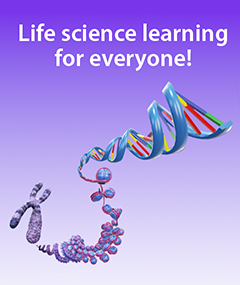More Than Meets the Eye: Visual Learning for the Life Sciences
Posted on 2/21/25 by Sarah Boudreau
We’ve talked to K12 and higher education instructors around the world, and one thing we hear a lot is that today’s students have difficulty staying focused. As "digital natives," Gen Z and Gen Alpha students are known for being visual learners who demand engaging content, causing instructors and administrators to seek out new solutions.
Here at Visible Body, we’re all about visual learning—it’s right in our name! In this blog post, we’ll talk about what visual learning means and how learning with 3D models can enhance the learning experience in unexpected ways.
Why visual learning in the life sciences?
Life sciences require visuospatial ability—the ability to visualize and process a structure's spatial location. For example, think about how the visual and spatial properties of DNA are particularly crucial for student understanding. When students can see how the molecules are connected, they can better understand how that form creates the unique double helix structure.
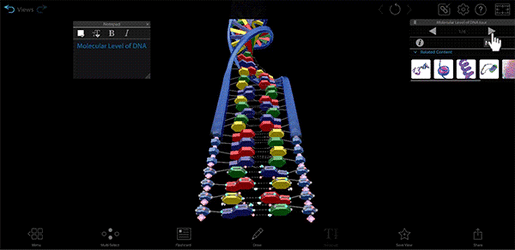
Interactive model in VB Suite.
As this 2019 article points out, health and natural science careers require visuospatial abilities. This means that learning in modalities that require visuospatial processing allows students to learn course content as they hone their skills. Likewise, science communication is usually done in a visuospatial manner, preparing students to both give and receive these explanations.
There’s also evidence that these visualizations can help students retain information for longer, because manipulating 3D models uses sensory memory.
Using 3D models can lead to some fascinating results. For example, consider augmented reality. A review of augmented reality usage in medical education literature found that not only does AR increase learning outcomes like professional knowledge, but it also boosts more unexpected outcomes like creativity and innovation.

Using the AR functionality in VB Suite's mobile app.
What do instructors have to say?
Let’s take a look at how instructors have used Visible Body’s 3D models in their classrooms.
High school biology teacher Kristin Cowell spoke about using VB Suite's 3D models and premade labs to teach photosynthesis.
"The kids can almost put themselves inside that tiny, tiny little cell and see what's happening there. That's a valuable experience, taking something that's abstract and making it much more concrete for them. They're doing the visuals, they're writing things down, and all of that interaction makes it a better experience for them, and they can better integrate the new information into what they already know," she said.

Interactive photosynthesis simulation in VB Suite.
Research conducted at LaTrobe University looked at the grades of anatomy students before and after the program adopted Visible Body. They found a remarkable leap in assignment, exam, and final grades after they used Visible Body.
One LaTrobe student noted, “It’s very helpful as it’s more interactive and better than just reading from a textbook.” Another said that Visible Body was “Easy to use, portable, can study anywhere, [and] gives a 3D image which is great.”
Richard Mantrana, lead instructor of the medical academy at Southwest Miami Senior High School, also spoke about how Visible Body helps his students. In Mantrana’s classroom, students watch him project VB Suite to the classroom's Promethean Board and use it as a lecture aid. Then, they get hands-on with the software for independent work. Mantrana uses several different 3D models and activities to get his students engaged—he describes one activity in which students pretend they are the blood flowing through the heart, manipulating and navigating the VB Suite heart model.
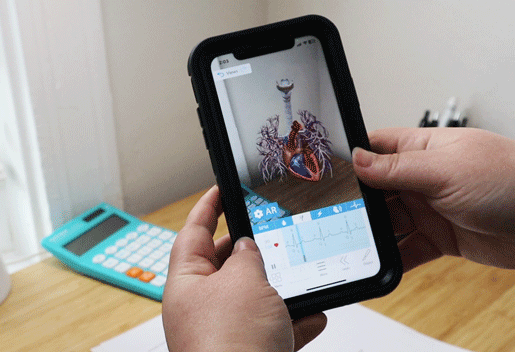
Interactive beating heart model in AR. From the VB Suite mobile app.
"They never become bored—you hardly ever need to redirect, because they love the interaction," said Mantrana. "They show their friends in different classes, they show their families. I've had emails from parents writing back about how wonderful this is, that their kids are playing with it at home."
What does it mean to learn visually?
Let’s clear something up. When you think "visual learners," you might be thinking about the theory of learning styles—that individuals learn better through their preferred mode of learning (visual, auditory, and kinesthetic). Learning styles are widely considered a myth—there’s scant evidence to back up this theory.
On the other hand, visualization tools like 3D models have been shown to increase understanding of life science subjects like biology and A&P. While textbooks tend to prioritize facts over processes, the illustrative power of 3D models can give students a fuller understanding of the subject matter.
 Learning with multiple modalities in Courseware.
Learning with multiple modalities in Courseware.
There are two major theories that explain visual models’ efficacy in science education: the dual-coding theory and the visual imagery hypothesis.
In dual-coding theory, linguistic and visual information are processed through different mental systems. Visualization combines linguistic and visual information, which means that students engaging with a model process the course content in multiple systems.
According to the visual imagery hypothesis, visualizations help with problem solving by identifying and reinforcing key concepts. In a model, information is manipulatable and can therefore be used to draw comparisons between concepts.
Visual learning for your classroom
Test out visual learning for yourself with a free trial of Visible Body Courseware! Just click below.
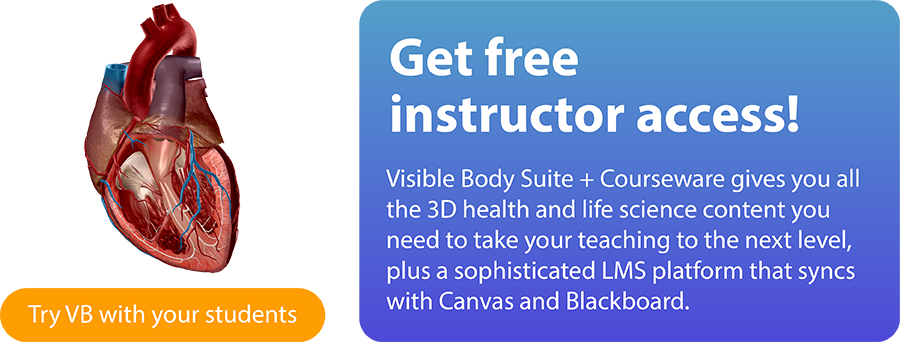
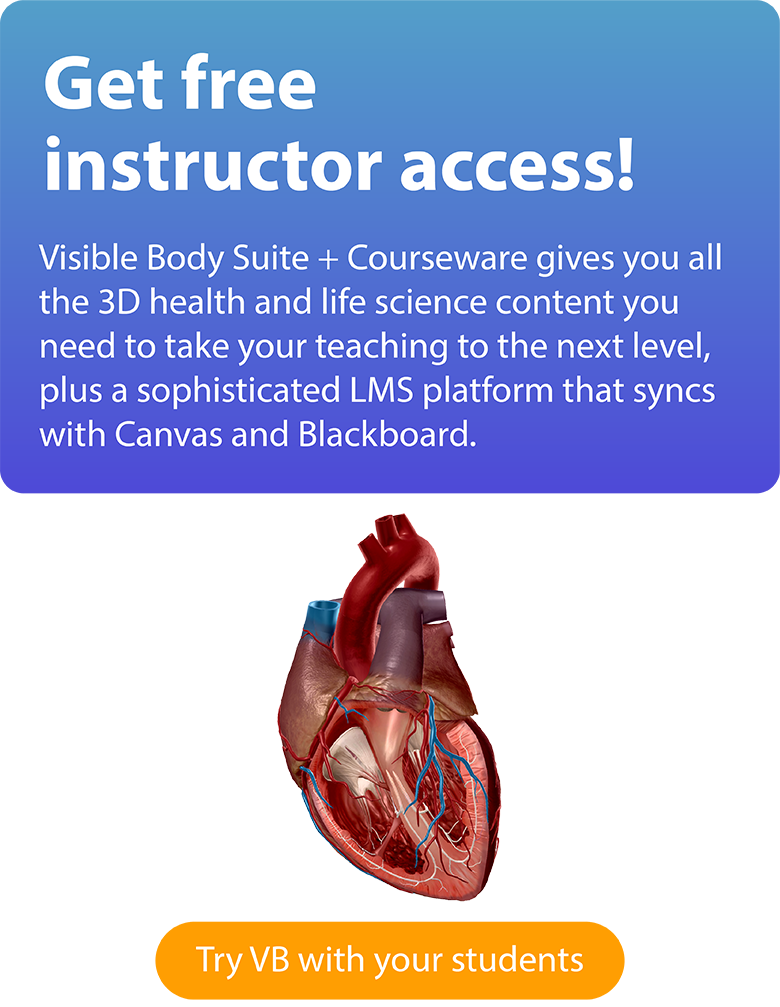
Do you want to use 3D models in your classroom, but you’re not a “tech person”? As teacher Richard Mantrana put it, “I myself am not a tech-savvy kind of guy, but thankfully, Visible Body is an old-school teacher friendly app.”
If you get stuck, Visible Body’s amazing Customer Engagement Team is here to help. The team provides group and one-on-one training sessions to help instructors make the most out of Visible Body.
Happy teaching!
Be sure to subscribe to the Visible Body Blog for more awesomeness!
Are you an instructor? We have award-winning 3D products and resources for your anatomy and physiology or biology course! Learn more here.



